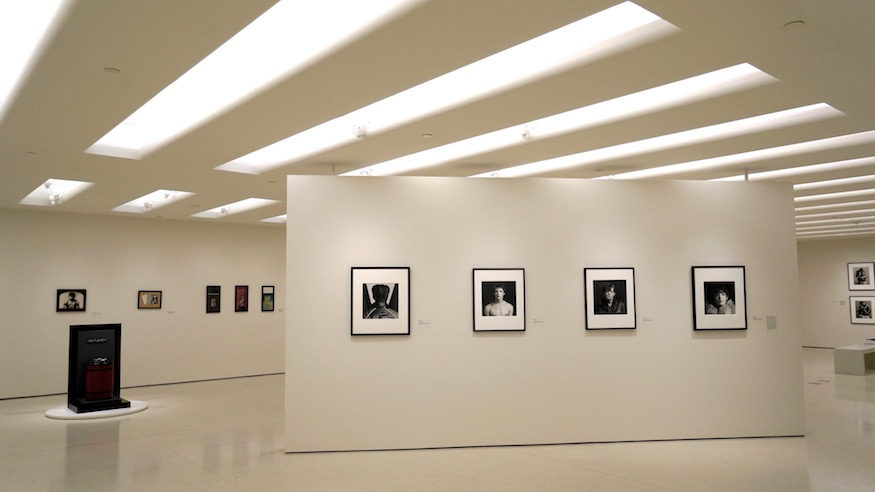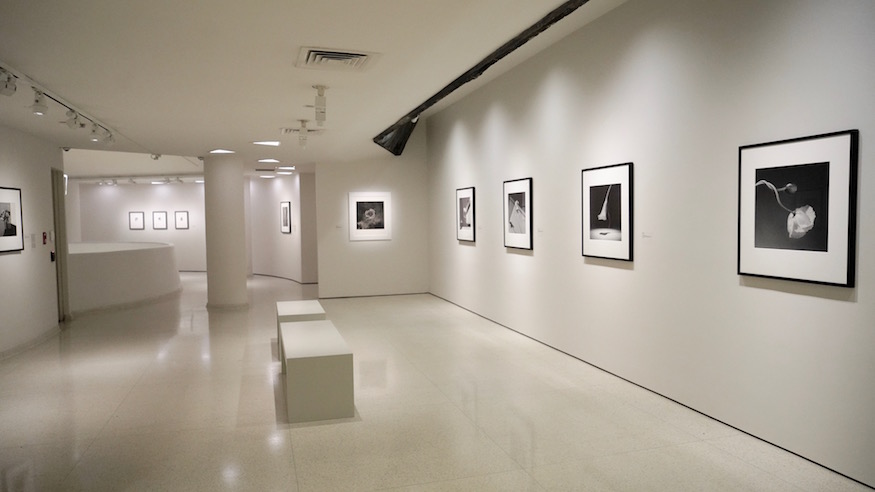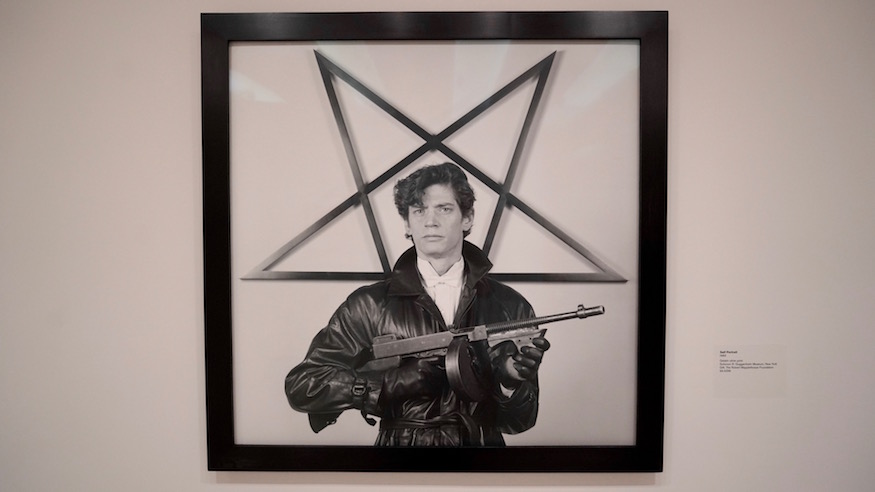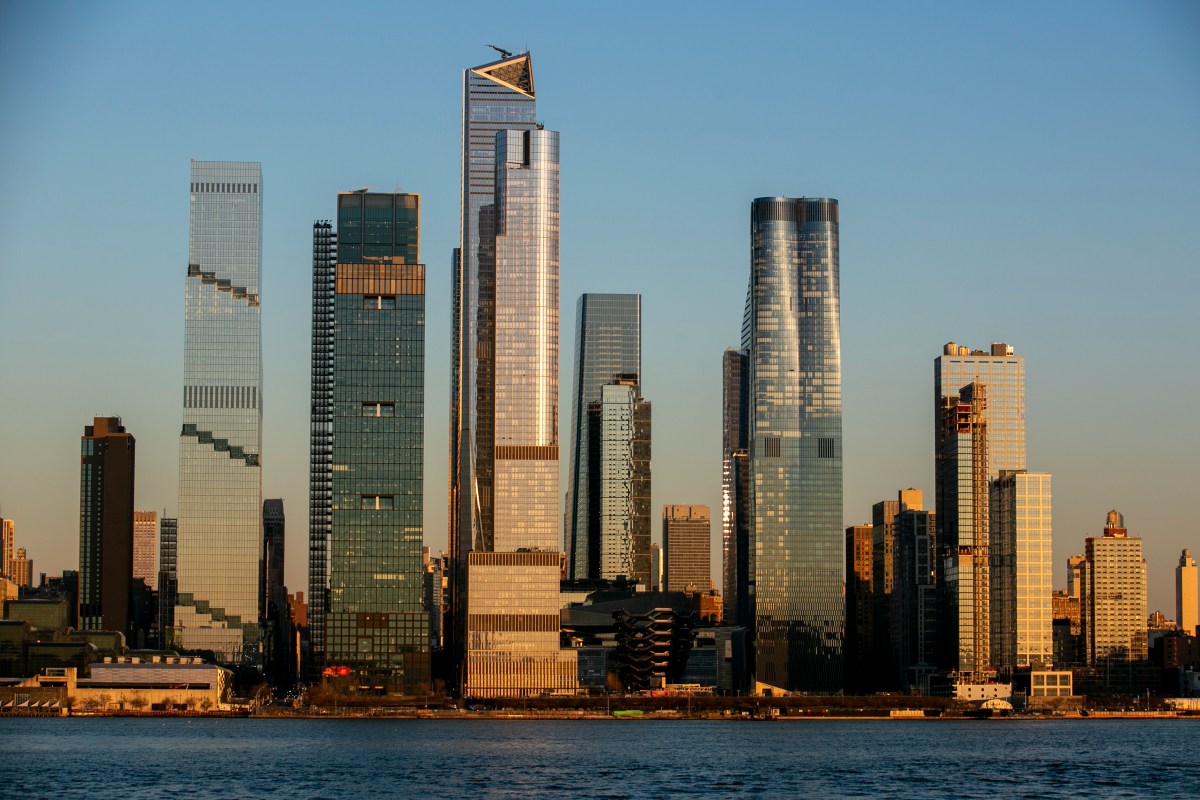Few photographers can claim to be equally acclaimed as controversial, but then there’s nothing conventional about Robert Mapplethorpe, revealed in the new Guggenheim Museum retrospective Implicit Tensions: Mapplethorpe Now.
The exhibition couldn’t be more accurately named. After you’ve strolled past the Impressionists on the first floor, a small sign outside the exhibit warns about the explicit content within. It’s not misplaced — even now, some people won’t be ready to see Mapplethorpe’s preferred subjects — nude men and women, BDSM scenes, celebrities stripped of their glamour — on par with the rest of the museum’s holdings.
Viewer discretion is definitely advised (and also rewarded) #Mapplethorpe @Guggenheim pic.twitter.com/a8Hqn3sUMm
— Eva Kis (@thisiskis) January 24, 2019
There is also literal tension, his black-and-white photos playing with light and dark, the way he stages a seemingly fragile scene but still gives his subject power, the reality versus his carefully constructed worlds. Before he ever picked up a camera, Mapplethorpe was trained as a painter and sculptor at Pratt Institute in the ‘60s, and it shows in every image he took.
“It’s rare to see something that isn’t perfectly staged, even an action like some of the S&M works where we see an explicit act, these aren’t documentary photographs — they’re portraits,” explains chief curator Lauren Hinkson.

The Guggenheim’s unique architecture enhances the impact of Robert Mapplethorpe’s images.
Before boudoir photoshoots became trendy and light S&M play a common part of a night out in Bushwick, Mapplethorpe was a queer artist who also participated in the S&M scene. Applying his fine arts training allowed his images of people and communities that weren’t mainstream to be seen by an audience that otherwise never would’ve encountered them.
“I think it was a strategy,” says Hinkson. “For him, the subjects are the same: It could be a flower, it could be a phallus, they’re all his vision. He didn’t create a hierarchy within his practice, so he’s always bringing this kind of unrelenting desire to create what he called ‘perfection in form.’”

The most graphic of these images are hidden in a small circular alcove at the back of the exhibit, though the attempt at privacy is foiled by having the gallery filled with the bustle of people and coffee-making from the cafe on the floor below. Perhaps this, too, is intentional, telling visitors that these images should not be illicit.
Mapplethorpe’s work often confronts stereotypes, whether it’s by posing black bodies as classical Greek statues or depicting bodybuilder Lisa Lyon in a corset. Even celebrities couldn’t maintain their carefully constructed personalities in the face of Mapplethrope’s lens. You’ll find people from Patti Smith to Arnold Schwarzenegger stripped of their personas to reveal something else.
“Even with someone like Andy Warhol, who was an idol to Mapplethorpe who worked for him at Interview magazine in the ‘70s, he still commanded control over that shoot,” says Hickson.

But Mapplethorpe’s favorite subject was himself, taking endless self-portraits throughout his life. The exhibit actually contains his final self-portrait before Mapplethorpe’s untimely death in 1989 from complications of AIDS: clutching a skull-topped cane, his own gaunt face blurry in the background. But the emotion visitors will leave with is excitement at a life spent in pursuit of experience and enthusiastic defiance of cultural and artistic norms.
Implicit Tensions runs from Jan. 26 through July 10, the first part of a year-long retrospective. On July 15, a second exhibit of contemporary artists influenced by Mapplethorpe will open.


















